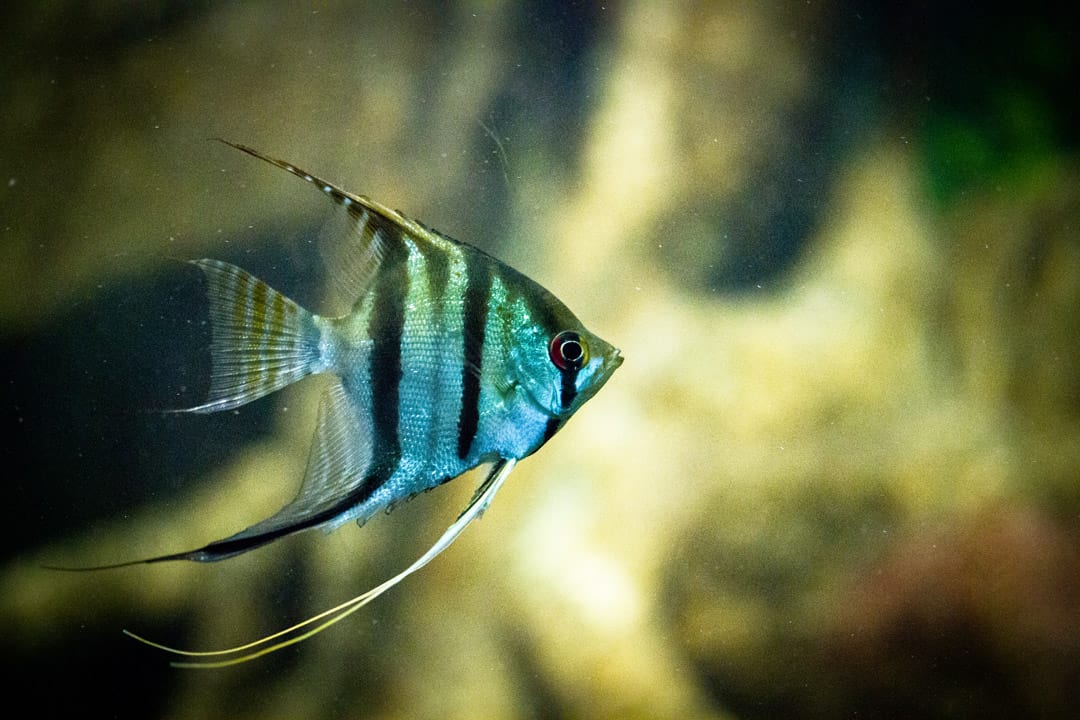The ability to discriminate between different quantities is not a skill unique to humans. Different animals, including fish, may possess the ability to count.
UTM Professor Robert Gerlai of the Department of Psychology contributed to a study that examines whether and, if so, how Pterophyllum scalare, otherwise known as angelfish, discriminate quantities while foraging.
Scientific literature on quantity discrimination in a foraging context has predominantly focused on mammals and birds. Several of these studies have shown that when animals are tested in laboratory conditions, they are sensitive to quantitative differences and often choose larger sets of food items over smaller sets.
Previous studies have shown that fish have the ability to distinguish between quantities of conspecifics, or members of their species. Angelfish are a social species, so there is an evolutionary benefit to being able to distinguish between sizes of groups. Choosing the larger group of fish, or shoal, offers better protection and reduces the risk of predation.
There is a literature gap in quantity discrimination experiments in fish with food as the discriminant. Fish, especially those that live in shoals, are often negatively affected when tested in complete isolation in a laboratory setting. In addition to the frightening test environment, other complications like uneven odour cues have prevented scientists from focusing on quantity discrimination in foraging contexts in fish.
Gerlai and his colleagues devised a novel methodology that allowed for angelfish to be tested individually while in a shoal, and therefore mitigated stress on the fish. Their new procedure also reduced other variables. For example, by presenting the stimuli outside of the aquarium, chemical and olfactory cues were excluded. This novel setup opens the way for developing more methods to accurately test numerical abilities in fish.
When quantity discrimination in a foraging context is tested in animals, often a binary choice test is given. This is a test in which two options are given to the animal and the choice the animal makes is observed. In the context of fish, a picture of a single item of food is shown on one side of the tank. On the opposite side of the tank, a picture of multiple items of food is shown. The side in which the fish spends the longest amount of time can be taken as the choice that animal has made.
There are two predominant theories that are said to explain how animals have the ability to count. The first is called the object file system, which allows animals to differentiate based on the number of elements, such as food items, in different groups — it is therefore thought to be more precise. The object file system of discrimination is said to be limited to small number of food items, with a maximum of four elements.
The second theory, known as the approximate number discrimination system, is used when larger sets of elements are presented. The approximate number discrimination system depends on ratios, not the absolute numerical differences between the number of elements compared.
In this study, Gerlai and his colleagues found a significant increase in accuracy in choosing the larger number of food items as the numerical ratio between the contrasting sets of food items increased. Overall, their results point to evidence that activation of the approximate number system was being used to discriminate.
Fish may not be solving complex math problems any time soon, but studying decision-making in this species when a binary choice test is given in a foraging context may help understand more complex behaviours.
Scientists are still left with several questions about the extent to which quantity discrimination in a foraging context is learned and if it is a result of evolutionary fine-tuning of neural circuitry.


